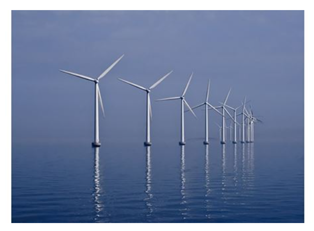To improve wind energy capture efficiency, the development of larger wind turbine blades and the expansion to deep-sea areas have become key trends. However, when using steel towers, the enormous weight of the tower structure implies that floating wind power platforms not only have massive dimensions and weight but also incur exorbitant construction costs. Constructing such towers with FRP (fiber-reinforced polymer) to support wind turbine blade systems (blades themselves can also be made of FRP) would significantly reduce the weight of the tower system, thereby enabling support on more cost-effective offshore floating platforms. Nevertheless, to date, there has been no research on FRP tower structures supporting wind turbine blades; major challenges in such research lie simultaneously in materials (durability, strength, and size effects), structural systems (structural forms and connection joints), and performance evaluation (strength, stiffness, and dynamic effects). Structural health monitoring of wind turbine blades and their supporting structures also presents a significant challenge.
Revitalizing the green economy, strengthening food security, and advancing sustainability as national strategies have made the construction of multi-layer floating superstructures imperative. Such multi-layer floating structures will be used for fish and poultry farming, as well as agricultural production. Given the inherent characteristics of floating structures, it is beneficial to design them as lightweight and durable structures. Against this backdrop, compared with traditional steel and concrete materials, using FRP—known for its lightweight, high-strength, and corrosion-resistant properties—to construct such floating superstructures offers numerous advantages. However, to date, there has been a lack of research on building floating structures in harsh marine environments. For FRP structures in marine settings, it is essential to evaluate their cost-effectiveness. Additionally, research is required at the material level (durability, strength, and size effects), structural performance level (structural forms and joint types), and structural performance evaluation level (strength, stiffness, and fatigue performance).
3.Research and Application of a New Bridge Structural System Based on FRP-Concrete-Steel Double-Walled Hollow Composite Members
